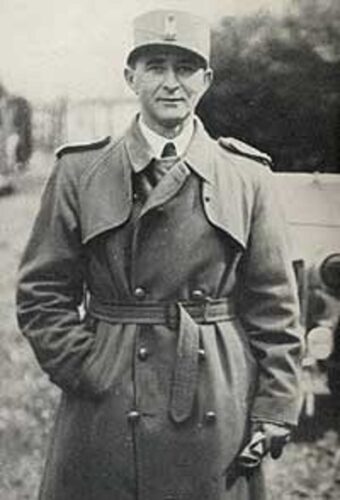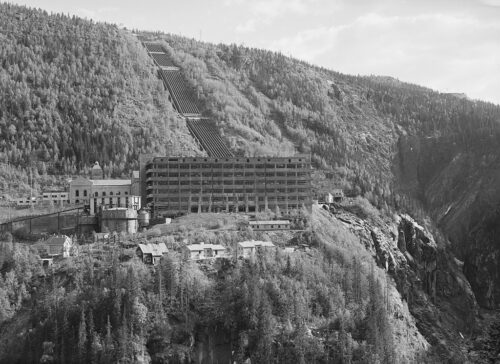Commandos in action during raid on island of Vågsøy, 27 December 1941. Photo by Malindine, E G (Lt), War Office official photographer. Imperial War Museum.
The Norwegian Independent Company 1 (NOR.I.C.1), pronounced Norisén (approx. “noor-ee-sehn”) in Norwegian, was a significant special operations force during World War II. Formed under the British Special Operations Executive (SOE) in March 1941, this group was originally intended to perform commando raids during the occupation of Norway by Nazi Germany.
The SOE was a secret British organization established in 1940 during World War II. Its primary mission was to conduct espionage, sabotage, and reconnaissance in territories occupied by the Axis powers. The SOE was instrumental in aiding local resistance movements and was active in all territories occupied or attacked by the Axis powers. The organization directly employed or controlled more than 13,000 people, about 3,200 of whom were women. The SOE was dissolved in 1946, but its legacy lives on.

The Norwegian Independent Company 1, also known as Kompani Linge (Company Linge), underwent rigorous training at various locations in the United Kingdom. One of these locations was the SOE establishment at Drumintoul Lodge in the Cairngorms, Scotland. This location was chosen for its reasonable similarity to Norwegian terrain, with mountains, lochs, high passes, and abundant snow in the winter months. The lodge, originally built as a Victorian hunting lodge in 1878, lies within an ancient pine forest in the Rothiemurchus Estate.

Operations and Achievements
Their initial raids in 1941 were to Lofoten (Operation Claymore) and Måløy (Operation Archery).
Operation Claymore was a British/Norwegian commando raid on the Lofoten Islands of northern Norway during the Second World War. The Lofoten Islands were an important center for the production of fish oil and glycerin, used in the German war economy. The operation was carried out on 4 March 1941, by 500 men of No. 3 Commando, No. 4 Commando, a Royal Engineers section, and 52 men from Kompani Linge. The force achieved their objective of destroying fish oil factories and some 3,600 tons of oil and glycerin.

Operation Archery, also known as the Måløy Raid, was a British Combined Operations raid against German positions on the island of Vågsøy, Norway, on 27 December 1941. The raid was carried out by British Commandos of No. 3 Commando, two troops of No. 2 Commando, a medical detachment of No. 4 Commando, a demolition party from 101 Troop (canoe) of No. 6 Commando, and a dozen Norwegians from Kompani Linge. The objectives of the operation were to destroy fish-oil production and stores used in the German war economy.
Captain Linge was killed during Operation Archery. His death occurred during the bitter house-to-house battle in Måløy. After his death, the title of the company was formalized as Kompani Linge .in his honor.

Perhaps their best-known raids were the Norwegian heavy water sabotage. The Norwegian heavy water sabotage was a series of Allied-led efforts to halt German heavy water production via hydroelectric plants in Nazi Germany-occupied Norway during World War II. The operation was aimed at the 60 MW Vemork power station at the Rjukan waterfall in Telemark. The plant was the world’s first site to mass-produce heavy water. The Allies were concerned that the Germans would use the facility to produce more heavy water. Between 1940 and 1944, a series of sabotage actions by the Norwegian resistance movement and Allied bombing ensured the destruction of the plant and the loss of its heavy water

Other notable operations included the Thamshavn Line sabotage. The Thamshavn Line sabotage was a series of sabotages against the railway Thamshavn Line in Orkdal, Norway during World War II. There were four separate sabotages, all performed by Company Linge in an attempt by the Norwegian resistance to prevent Germany from getting the pyrites that were being extracted at the mine at Løkken Verk.
In the capital area, the Oslogjengen carried out several sabotage missions. Oslogjengen, also known as Kompani Linge’s Oslo Detachment, was a sabotage group operating in Oslo from May 1944 to May 1945, during the last year of the occupation of Norway by Nazi Germany. They performed a series of successful sabotage operations. To paralyze the German production of explosives, an operation against two sulfur acid factories was performed in June 1944. In August 1944, an operation against a bus garage resulted in the destruction of 25 Messerschmitt fighters and 150 airplane motors.
Milorg and Communication Lines with London
Milorg was the main Norwegian resistance movement during World War II. Milorg’s resistance work included intelligence gathering, sabotage, supply-missions, raids, espionage, transport of goods imported to the country, release of Norwegian prisoners, and escort for citizens fleeing the border to neutral Sweden.
In cooperation with Milorg, communication lines with London were gradually improved during the war. By 1945, 64 radio operators were spread throughout Norway. This network played a crucial role in coordinating resistance efforts and maintaining contact with the Allies. Despite initial disagreements with Britain’s SOE over the nature of their activities, both sides made compromises, and attacks on factories became a stock in trade of the Norwegian resistance.

Closing Thoughts
According to Max Manus’s autobiography, Kompani Linge was for a time counted among the most decorated military forces in the United Kingdom during World War II. The veterans from the company were also among the first to welcome King Haakon home.
A total of 530 Norwegians served in Kompani Linge of whom 57 died. The bravery and dedication of these individuals played a crucial role in the resistance against Nazi occupation, making Kompani Linge a symbol of courage and resilience during one of history’s darkest hours.

The legacy of Kompani Linge serves as a reminder of the power of resistance and the indomitable spirit of those who fight for freedom. Their story continues to inspire and educate future generations about the importance of standing up against oppression.
Resource
Norges Hjemmefront Museum
https://kultur.forsvaret.no/museer/norges-hjemmefrontmuseum
